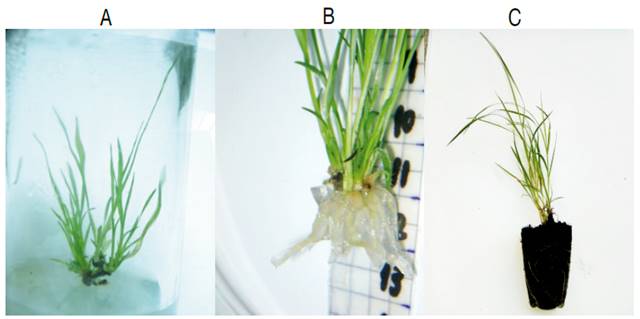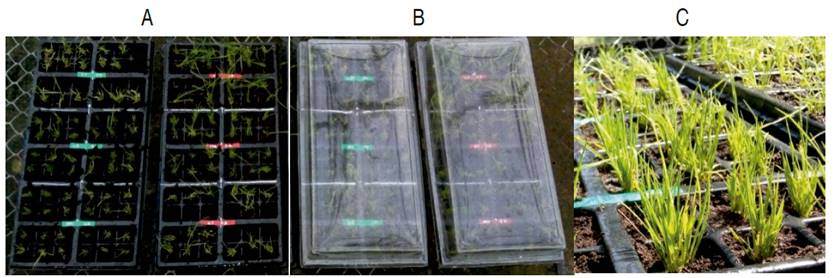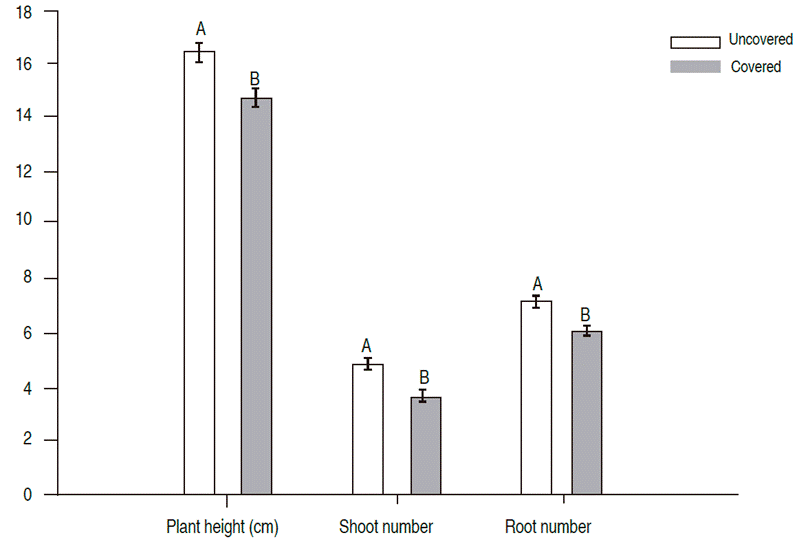Arrow cane (Gynerium sagitatum Aubl.) is a Poaceae Indian native plant species that grows in the Americas from México to Paraguay associated to river shores, floodplains, and swamps where it behaves as colonizer for forest succession. The plant is a giant grass with erect stems that grows up to 8 m height. The upper part of the culms is formed by unfold leaf blades with an open fan-shaped form. Leaves are 160 to 230 cm long and 8 to 14 cm wide; a single culm can have up to 200 leaves during lifetime, keeping 19 to 28 fresh blades at any time. Underground, the plant forms leafy rhizomes that originate from old culms, becoming a profuse interconnected net that works, preventing soil erosion (Suárez, 2020). In Colombia, arrow cane is found in the shores of Cauca and Magdalena Valley rivers, Cauca, Valle del Cauca, and Antioquia departments. The plant is well adapted to the Colombian Atlantic Coast environmental conditions where it grows in the plains of Córdoba and Sucre departments where it is cultivated by aboriginal communities (Suárez, 2020). The central leaf nerve is the fiber source for local indigenous artisans to make crafts such as rings, shoes, necklaces, wallets, and the most famous, "Sombrero Vueltiao", which is a Colombia's Cultural Symbol (GRIN, 2018; López and Suárez, 2018).
Micropropagation is a clonal technique used to propagate plants in closed containers, provided with artificial media, under controlled environmental conditions, and in abscense of microbes (Suárez, 2020). As part of a biotechnology program on arrow cane developed at the Institute for Applied Biotecnology in the Caribbean (IBAC), micropropagation has been used to massively propagate arrow cane plants using in vitro culture of explants with pre-existing meristems, a five-stages protocol that comprises mother plants preparation, in vitro establishment of explants, propagule multiplication, in vitro rooting of multiplied shoots and transfer to ex vitro conditions (Suárez et al., 2013). Improvements of the arrow cane micropropagation protocols include protocols for different cultivar in conventional semisolid media (Suárez et al., 2009; Pastrana and Suárez, 2009; Suárez et al., 2020a) or alternate double-phase system (Semisolid -liquid) to increase cost and time efficiency (López and Suárez, 2018). In both cases, micropropagated plants, in vitro rooted or not, have been successfully acclimatized to ex vitro conditions using different substrates (Suárez et al., 2020b).
Ex vitro adaptation is intended to secure survival for micropropagated plants, since in vitro culture conditions in closed recipients and high water saturation hinder the development of mechanisms to control water loss, such as cuticle accumulation and stomatal closure in leaves, a response associated with abscisic acid (ABA) levels in plant tissues (Suzuki et al., 2016). Micropropagated plants should be initially maintained under highly humid environments to avoid rapid dehydration when transferred to ex vitro conditions. Usually, micropropagated plants are transferred into plastic trays using a high retention water substrate (peat) and covered with transparent plastic films that allow light incidence while retain humidity for several days, respectively. Several plant species have demonstrated to resist water loss without plant coverage when transferred to ex vitro conditions (Kodym and Leeb, 2019). For arrow cane micropropagation, conventional ex vitro adaptation procedures comprises coverage during five days of recently transferred plants with transient removal of the covers every 2 h during daytime to avoid heating the plants, followed by spraying with distilled water; which increases the operational labor costs. In the present research, the survival and growth performance during ex vitro adaptation of arrow cane micropropagated plants with no coverage were compared to the conventional ex vitro adaptation protocol to evaluate the possibilities of avoiding plastic coverage and increasing cost efficiency (Bhojwani and Dantu, 2013; Gil et al., 2017; Makowczyńska et al., 2016).
MATERIALS AND METHODS
The plant material consisted of micropropagated plants of arrow cane "Criolla", "Martinera" and "Costera" cvs. Plants were grown in vitro from 2-3 cm stem segments with a single axillary meristem. Explants were disinfected for 15 min in a 1.25% NaClO (sodium hypochlorite) solution and rinsed three times with sterile-distilled water inside a laminar flow hood. Surface-sterilized explants, a group of three shoots each, were established in 250 mL polycarbonate flasks dispensed with 30 mL of the establishment medium consisting of semisolid MS salts (Murashige and Skoog, 1962) with (in mg L-1) myo-inositol (100), thiamine HCl (0.4), sucrose (30,000) and Agar (8,000) (Sigma Co®). Flaks were established with a single explant, covered with two layers of heavy duty aluminum foil, sealed with Parafilm®, and stored at 20 °C with 12 h of photoperiod (40 µmol m-2 seg-1) with subcultures every six weeks to fresh medium of the same formulation. After four subcultures, established shoots were used for the next stage.
Shoot proliferation stage was performed under the same conditions indicated for the establisment stage but the medium was supplied with 0.5 mg L-1 BAP (6-Benzylaminopurine). After three subcultures, aproximately 250 cultures were transferred to a fresh medium supplied with BAP and 250 were transferred to a medium deprived of BAP but supplied with 0.5 mg L-1 NAA (1-Naphtalene acetic acid) for the in vitro rooting. Explants in multiplication and rooting media were maintained during six weeks before ex vitro transfer.
Transfer to ex vitro conditions
In vitro multiplied shoots (200) and in vitro rooted shoots (200) were maintained in culture for six weeks and then, they were removed from the recipient, washed with sterile water to eliminate medium residues, and transferred into 72-plug containers filled with peat as substrate. Trays were placed in a shade house with a 50% light under two different ex vitro conditions at the Plant Biotechnology Lab of the Universidad de Córdoba (Montería - Colombia 8°75'N and 75°52'W, 14 masl, 28 °C and 82% R.H.). Trays with half number of shoots (rooted and rootless) were covered with plastic transparent film during 5 days with periodical removal of covers every 2 h, and spraying with sterile water during every removal; after 5 days, covers were removed, and plants were fog-irrigated three times per day during 2 min each. Simultaneously, trays with the 50% remaining plants (rooted and rootless) were maintained uncovered but fog-irrigated three times per day for 2 min each. Trays with transferred plants were maintained under shade house conditions for 40 days. Temperature in the shade house was 28 °C average. The experiment was a factorial with three factors [coverage (2), cultivars (3) and rooting condition (2)], and 12 treatments distributed with a split-plot design; where coverage was the main plot, genotype was the split and rooting condition the split-plot. Each treatment (half tray = 36 clusters) was repeated three times for a total of 1296 experimental units. After 40 days, the survival rate was calculated, the number of shoots per plant, shoot height and number of roots per plant were analyzed using an ANOVA (α= 0.05) based on the model Y ijk = µ + A i + B j + (AB) ij + C k + (AC) ik + (BC) jk +(ABC) ijk + E ijk; where A i was the effect of the coverage, B j was the effect of the genotype, C k was the effect of the rooting condition, AB the effect of the whole plot error and E the split plot error. Means were separated using a Tukey test (α=0.05).
RESULTS AND DISCUSSION
The arrow cane explants from "Criolla", "Martinera" and "Costera" cvs were in vitro established, shoots proliferated, half of them rooted, and both rooted and unrooted, were transplanted to ex vitro conditions (Figure 1-A, B, C).

Figure 1 Cultures of arrow cane "Criolla" cv. in stages of propagule multiplication (A), in vitro rooting (B) and ex vitro acclimatization (C).
The transfer to ex vitro conditions occurred either under plastic coverage during 5 days period after transplanting or without cover (Figure 2A-B); however for both cases, the plants showed a complete survival rate regardless of the rooting condition (rooted or rootless) of transferred material. The ex vitro adapted plants showed normal growth and complete adaptation to open conditions (Figure 2C).

Figure 2 Ex vitro adaptation of arrow cane (Gynerium sagitatum Aubl.) micropropagate plants. A: uncovered transplanted plants, B: plastic-covered transplanted plants, C: acclimatized plants.
The ANOVA allowed to evidence that coverage statistically affected (P<0.05) plant height, number of shoots, and number of roots variables. The Tukey mean separation test showed that plants in trays with no plastic coverage significantly increased height, number of shoots, and number of roots compared to plants covered during 5 days period after transplanting (Figure 3).

Figure 3 Effect of plastic coverage on plant growth factors during ex vitro acclimatization of arrow cane (Gynerium sagitatum Aubl.) micropropagated plants.
When uncovered, the in vitro-rooted "Costera" and "Martinera" plants showed a significant increase (P<0.05) in plant height compared to adapted plants from transferred rootless shoots; however, "Criolla" plants rooted or rootless at the transplant stage were not different concerning plant height. For all three cultivars, plants were not different in number of shoots despite rooted or rootless condition; and for number of roots, only "Criolla" plants showed a significantly higher number of adventitious roots when plants were transferred from the in vitro rooting stage compared to those transferred from the rootless multiplication stage (Table 1). Among all cultivars maintained without plastic covers during the initial 5 days acclimatization phase, the in vitro-rooted "Criolla" plants showed the highest value in plant height, number of shoots and number of roots during the ex vitro adaptation stage.
Table 1 Growth of arrow cane (Gynerium sagitatum Aubl.) micropropagated plants "Costera", "Criolla" and "Martinera" cvs transferred to ex vitro conditions with or without covers.

When covered, adapted plants from rootless "Criolla", "Costera" and "Martinera" cvs were not different (P>0.05) with respect to plant height; however, based on the Tukey test rooted "Costera" plants had larger shoots than "Martinera" rooted plants. Rooting condition of the transferred propagule and genotype had no effect on number of shoots. Only "Martinera" plants transferred from rootless cultures showed a significant reduction of the number of adventitious roots when compared to rooted shoots of all three cultivars. Of all the covered plants, "Costera" transferred from in vitro rooting stage showed a higher plant height and more adventitious roots while "Martinera" and "Criolla" produced more shoots (Table 1).
Micropropagation is performed under controlled environ-mental conditions such as light, moisture and temperature that drastically change when plants are transferred to ex vitro (Yescas et al., 2016). The water-saturated atmosphere when plants are inside the culture recipient is significantly reduced when they are transferred to ex vitro in the acclimatization stage; therefore, mechanisms such as plant coverage with plastic film covers to reduce plant dehydration are usually implemented. Translucent plastic film is the most used cover material because of the cost, handling and recyclable use; however, heating inside the tray is a limiting factor that can result in heat stress for covered plants (Ilczuk and Jacygrad, 2016; Makowczyńska et al., 2016; Gil et al., 2017; Dreger et al., 2019). Plastic covers must be gradually moved to increase dehydration tolerance and to reduce temperature, a stage that can take long time for some species, which increases labor and costs (Indacochea-Ganchozo et al., 2017; Suárez, 2020).
In the present research, plants transferred to ex vitro conditions under plastic coverage showed lower plant height, less number of shoots and roots compared to those transferred and acclimatized without coverage. For the conditions of the present research, in vitro propagation was performed at 20 °C and in the shade house, ex vitro temperatures were at least 6-8 °C higher; however, for plants that were acclimatized under plastic covers during a 5 days period after transplanting, temperatures may were even higher. Under those conditions, the covered plants probably increased respiration rates, resulting in a higher consumption of energy reserves than the uncovered plants for the same period of time (Fahad et al., 2017). Due to micropropagated plants are unable to readily photosynthesize after transfer to ex vitro conditions and are completely dependent on accumulated organ reserves, less heat-stressed uncovered plant may have more energy reserves available for growth than covered ones, and can develop a higher number of shoots, roots and larger plants (Kodym and Leeb, 2019). Although the effect of respiration rates and temperatures inside the covered trays were not evaluated in this research, such evaluations are strongly suggested for further studies.
CONCLUSION
The transferring of arrow cane "Criolla", "Martinera" and "Costera" cvs micropropagated plants with no plastic coverage allowed a complete (100%) adaptation to ex vitro conditions, increased the plant height, the number of shoot, the number of roots and reduced the labor and plant handling during stage IV of micropropagation.















